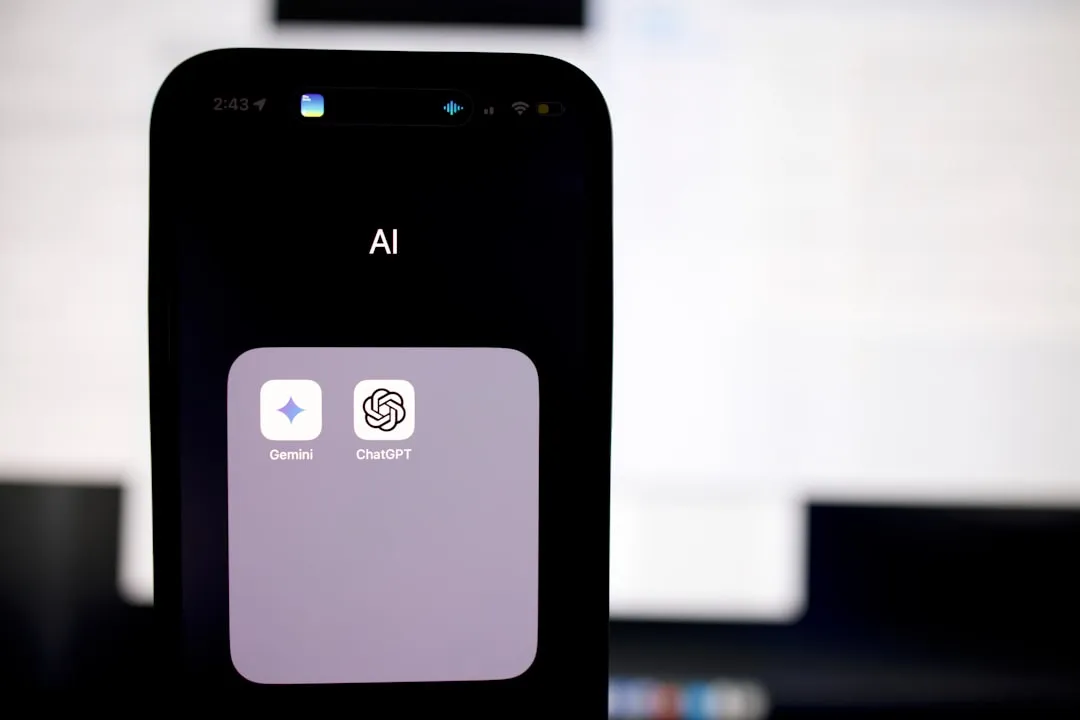Comparing the present-day states of the consumer and enterprise sectors of augmented reality is like evaluating the merits of sports car versus work trucks. Like consumer AR, sports cars are sexy and exciting, but perhaps a bit impractical at times. On the other hand, enterprise AR is utilitarian, but it gets the job done and, in the long run, pays for itself.
And that's why AR headsets, like the HoloLens and the Magic Leap One, and smartglasses, such as Google Glass, Vuzix M Series, Epson Moverio, and others, are aimed at business buyers rather than mainstream markets.
Despite some marvelous innovations in the enterprise space, the bread and butter of enterprise AR apps consist of hands-free workflow guidance and remote assistance. In fact, most companies that offer a workflow guidance solution also provide a compatible remote assistance app. On the other hand, there are also a number of software companies that concentrate solely on the remote AR apps.
Due to the wide proliferation of the remote AR apps, it's a worthwhile exercise to take a look at the major players and the also-rans.
The Basics
Nowadays, smartphones have become a commodity of sorts, usually outfitted with certain expected features, such as a high-definition touchscreen, rear and front-facing cameras, LTE, Wi-Fi, Bluetooth connectivity, and a headphone jack. Wait, scratch that last one and add...a camera notch?! But I digress.
The same is essentially true for the remote AR assistance market. Generally, the app should enable a user to initiate a video call with a remote expert. The app should also allow the remote expert to see what the caller sees via live video. And, ideally, the app should also give the remote expert the ability to annotate the live video feed with drawings or other virtual content.
As a result, remote AR assistance apps are on the verge of being commodities, where price can often become a deciding factor. (Most providers do not advertise their pricing, instead insisting that prospective users contact their sales teams. Even upon inquiry, most companies were reluctant to reveal pricing tiers.)
Nonetheless, there are some differentiating factors. For instance, some apps are limited to mobile devices, while others stretch their compatibility to include smartglasses and the HoloLens. Others are able to offer unique features that completely set them apart from the rest of the pack. Let's see what the most viable players in the current market have to offer.
The Top Contenders
Atheer: Winner of the Auggie Award for Best Enterprise Solution in 2016 and 2019, Atheer is certainly a favorite among the industry insiders and observers who judge these things.
It has earned its status by widening its device support. Previously limited to Android-based smartphones, tablets, and smartglasses, Atheer expanded its device compatibility to the HoloLens via the Augmentor app by Design Interactive last year and brought iPhones and iPads into the fold this year.
The clincher for its most recent Auggie, though, might be the addition of gesture input for smartglasses via a single RGB camera.
Microsoft Dynamics 365 Remote Assist: The slang term "sherlock" (used as a verb) usually applies to Apple introducing new OS functionality that renders third-party apps obsolete. Now, Microsoft is playing Apple's role in the HoloLens ecosystem, threatening to sherlock the remote AR apps catering to HoloLens with its new Remote Assist app. And, if that weren't enough, Microsoft is taking on the mobile AR remote assistance app crowd as well by porting Remote Assist to Android (with a version for iOS forthcoming).
Remote Assist is among the Dynamics 365 suite of enterprise apps for Azure, which gives the software a foot-in-the-door with cloud computing customers looking to adopt AR in their business practices. The app is tagged with a somewhat hefty price, starting at $65 per user per month. Companies looking to deploy the HoloLens 2 can get the headset and Remote Assist starting at $125 per user, per month, as opposed to purchasing the headset outright for $3,500 and subscribing to the app.
Scope AR: The elder statesman of the remote AR crowd, Scope AR launched its Remote AR solution for smartglasses and mobile devices at AWE 2015 after demonstrating the technology with Epson's Moverio smartglasses at CES 2014.
Scope AR has since expanded its app to the HoloLens and added support for ARKit and ARCore for its mobile apps, giving the platform perhaps the broadest device support in its class. Most recently, the app added a session recording feature.
Last year, Scope AR merged Remote AR into its WorkLink platform and rebranded it as WorkLink Assist.
The Smartglasses Class
Augmentir Remote Assist Essentials: One of the newest kids on the block, Augmentir's Remote Assist Essentials leans on its pricing as its big selling point, with a starting price of $10 per user, per month.
Augmentir includes many of the same perks of other remote assistance apps, such as live voice and video, chat, and on-screen annotations, along with integration with other enterprise applications and compatibility with mobile devices and smartglasses.
Epson Moverio Assist: Better known for its Moverio line of smartglasses and its synergy with the drone market, Epson released its own remote assistance platform, aptly named Moverio Assist, for its smartglasses hardware. As a result, its compatibility is limited to the Moverio BT-350 or Moverio BT-300 smartglasses for users in the field along with desktops for remote support staff.
Moverio Assist does have a rather unique subscription pricing model of $29.99 per month for 600 minutes. Remember when you had to keep track of your mobile minutes? Yeah, that wasn't fun at all.
Lenovo ThinkReality: Here's an interesting strategy: Lenovo's ThinkReality sub-brand is an ecosystem of enterprise AR software (including a remote assistance app), connected sensors, and an AR headset designed to play nice with Microsoft Azure's cloud platform.
Unfortunately, based on our hands-on with the Lenovo ThinkReality A6, the headset does not appear to be up to the task of keeping up with the HoloLens (let alone its successor), so let's not think too hard about this one.
Re'flekt Remote: At first, there isn't much that separates Re'flekt Remote from the pack. Annotate live video view? Check. Compatibility with mobile devices and smartglasses? Check. File sharing and chat? Check and check.
However, Re'flekt's remote AR solution does deliver something different that would make customer service and technical support call center managers, as well as their customers, cheer: skills-based routing. So instead of connecting callers with the first available expert, the system matches callers with experts who have the specific knowledge to assist them. Anything that saves customers from call transfer hell is a welcomed feature.
Upskill: The 2018 Auggie Award winner for Best Enterprise Solution, Upskill's remote AR solution is part of its Skyline platform, which places more emphasis on its workflow guidance, knowledge base, and application authoring capabilities.
However, Upskill does offer some unique features, such as the ability to share documents and collaborate on them remotely.
Ubimax xAssist: Another app with the distinction of claiming an Auggie Award as the 2017 winner for Best Enterprise Solution, the Ubimax xAssist is designed for wearables first. In addition to Microsoft's HoloLens and Google Glass, xAssist is compatible with smartglasses and AR headsets from Vuzix, Epson, Daqri, and Sony. It even supports the Meta 2 and the ODG R-7.
When comparing Ubimax to its competitors from an enterprise platform perspective, Ubimax has an advantage of offering highly specialized solutions for logistics and manufacturing in its Frontline suite. In addition, like Upskill, Ubimax offers an application authoring tool designed for non-programmers. And while Scope AR just recently added session recording, Ubimax has been there and done that.
VistaFinder MX: Japanese telecommunications company KDDI offers a unique approach with its VistaFinder MX tool, which works on mobile devices and smartglasses, such as Vuzix's M series. Instead of enabling remote experts to draw on a live video feed, the app freezes the camera view for the expert to draw on and then forwards that image to the user in the field. The app is then able to anchor the annotations onto the users live video feed, treating the static drawing as a sort of marker.
For Smartphones Only
Help Lightning: A relative underdog compared to the other names on this list, Help Lightning does have an ace up its sleeve. While other remote AR apps enable remote experts to draw on the camera view or insert digital content, Help Lightning can actually insert the remote experts' hands into the camera view. The platform applies patented technology that converges two real-time video feeds and, along with computer vision for hand detection, creates the illusion of the hands from one feed appearing in the other. This gives "reach out and touch someone" a new meaning!
On the downside, Help Lightning has not yet taken the plunge into the world of AR headsets, opting to wait for the market to mature. According to a company spokesperson, some clients are using the software with smartglasses from Vuzix and Real Wear.
The company did not disclose specific fees, but noted that each deployment is custom-quoted, with volume discounts for customers with larger numbers of users.
Streem: Portland-based Streem pitches its remote AR assistance platform to home appliance service companies for guiding customers through product troubleshooting and maintenance at home, with a concentration on delivering annotated video via its mobile app.
The platform also uses machine learning and computer vision for spatial mapping and object recognition. The company's recent acquisition of startup Selerio opens up the possibility for Streem to add occlusion to its platform as well.
TeamViewer Pilot: Teamviewer is a familiar name in the IT help desk world. Employing a lightweight app install and a PIN code, Teamviewer enables technicians to take control of users' desktops for troubleshooting purposes. Teamviewer's move into the remote AR world, therefore, is a natural transition.
Available for iOS devices via the App Store and Google Play, TeamViewer Pilot includes the basic features of most remote AR apps, such as remote camera sharing and visual annotations, along with session recordings and unlimited calls. While TeamViewer Pilot is limited to desktop and mobile, it is priced attractively at $39 per month, billed annually ($468 total) for nine technicians.
Techsee: Similar to Streem, Techsee targets its product to specific verticals, in this case customer service and technical support functions. Remote technicians and agents are able to annotate the camera view of customers' mobile phones. Pretty basic.
However, in a novel twist, Techsee also offers Eve, a virtual assistant armed with augmented reality that can walk customers through installation and troubleshooting of products. Using computer vision, Eve can identify the product, highlight components, and annotate instructions on the camera view. Unfortunately, Eve is only available in limited release at the moment.
Vuforia: Before there was ARKit, PTC's Vuforia stood in as the go-to platform for adding AR capabilities to mobile AR apps. Upon the introduction of the aforementioned native toolkit for iOS, Vuforia brought its own remote AR assistance app, Chalk, to the App Store for compatible iPhones and iPads, followed by an Android version on the Play Store upon the advent of ARCore.
Leveraging the surface detection capabilities of ARKit and ARCore, Chalk gives users the ability to draw on their camera view and maintain tracking throughout the session as the device moves within the space. Chalk is also available on a subscription model. Queries about pricing were not returned at the time of publication.
The Future
There's an emerging class of remote collaboration apps for the HoloLens and/or the Magic Leap One that are worth mentioning as well. These apps include Mimesys (recently acquired by Magic Leap), Arvizio, Avatar Chat, Spatial, and Spatiate, and they each offer some kind of remote interaction with 3D content.
However, these apps do not completely fit neatly within the realm of remote AR assistance apps, primarily because these apps aren't purpose-built for remote assistance usage (although some can be used for that purpose in certain circumstances). While that might seem like a technicality, these futuristic apps simply wouldn't fit the bill for, say, helping a mechanic fix a Porsche.
Nevertheless, there's a clear line of sight from what these remote collaboration apps offer to what could eventually break the mold of the status quo of remote AR assistance apps, and evolve into the next generation.
For now, the 15 apps above are your best bet when looking to utilize the powers of AR to take your remote assist needs to the next level.
Cover image via Microsoft/YouTube

























Comments
Be the first, drop a comment!